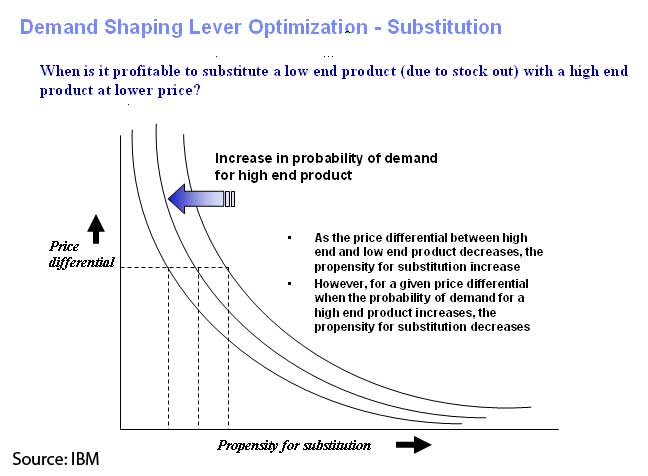When does it make sense to substitute one product or push customers towards it when another product is out of stock?
Dell was famous for this technique, often referred to as "demand shaping"; for example, if 40 gigabyte hard drives were in low supply, it would perhaps offer 60 gigabyte drives at a discount from the normal price - maybe even down to the price of the 40 gigabyte drives - to push consumers in this direction.
To make these decisions optimally, however, real science is needed, says
Manoj Singh, Associate Partner in IBM's Supply Chain Managenent Strategy Practice.
He sent SCDigest the graphic below that illustrates some of his key points in response to our recent article and report on Integrating Supply Chain Planning and Execution.

"Substitution should NOT be just based on availability of the second item. One should also analyze the price discounts required to push the second item and, hence, answer questions like: When is it profitable to substitute a low-end product (due to stock out) with a high-end product at lower price?" Singh says. "Clearly, if the probability of demand for second item is high, then you would not want to discount it for meeting the demand for the first item."
Agree or
disagree? What is your perspective? Let
us know your thoughts at the Feedback button
below.
|